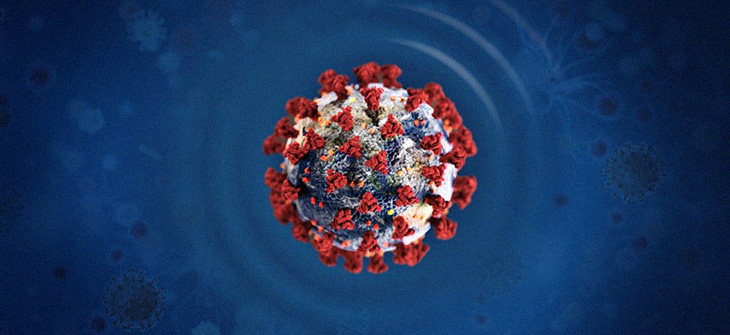
The past few months have seen the world change, literally. Global travel has come to a standstill, most forms of commerce have slowed down, some of the world’s biggest corporations are posting losses instead of profits, and even the world’s major economies have slumped. What is the cause of all these? A group of microscopic beings wreaking havoc on a lot of people’s health, spreading quickly and causing disease in the human population, raising alarms and fear amongst many, and causing a global human mortality rate never before seen in recent decades: A Virus. More specifically, a Coronavirus.
What exactly is a Coronavirus? And is this totally new to the world?
Coronavirus is not a single kind of virus. Instead, it is a family of viruses, characterized by crown-like protrusions on their surface. These protrusions are actually protein receptors, and their appearance is the basis for the virus family’s name: Coronavirus, a virus with a crown.
First detected in the 1960s, there are hundreds of species in the Coronavirus family, some existing in humans, others in animals, others in both. Of the hundreds of known Coronaviruses, only six were known to cause disease in humans as of early 2019. Common amongst these six Coronaviruses was the fact that they had the potential of causing upper respiratory illnesses in humans, in varying severities. Four of these six viruses were known as Alpha Coronavirus 229E, Alpha Coronavirus NL63, Beta Coronavirus OC43, Beta Coronavirus HKU1, and were common infections world-wide, causing mild to moderate upper respiratory tract illnesses like the common cold.
In November 2002, a 5th Coronavirus that could cause disease in humans was identified. This one caused Severe Acute Respiratory Syndrome, or SARS. The virus was hence named Severe Acute Respiratory Syndrome – Coronavirus, or SARS-CoV. This specific virus disappeared in 2004, hopefully due to eradication and not just because of hibernation. Another Coronavirus, now the 6th species known to cause illness in humans, was detected in September 2012. This 6th species is suspected to have originated from dromedary camels in the Middle East region, and the disease was thus named Middle East Respiratory Syndrome, also a severe upper respiratory tract illness. The virus was named Middle East Respiratory Syndrome – Coronavirus, or MERS-CoV.
However, since the first report of a pneumonia case of unknown cause in Wuhan, China, the world has now been introduced to a 7th Coronavirus that causes disease in humans. First reported by the Chinese Government to the World Health Organization on 31 December 2019, the virus was first referred to in public media as “novel Coronavirus” to indicate that the virus was newly detected, and therefore not much details were known about it. Over the course of the next month more and more cases of same characteristics were being reported in China, and with rapid contagion being reported and proven across geographic borders, the World Health Organization declared a Public Health Emergency of International Concern on 30th January 2020, merely a month since the first case was officially reported from Wuhan, China, considered the virus’ point of origin.
On 11th February 2020, the disease was officially named the Coronavirus Disease 19, or COVID-19, to denote that it was caused by what is now the 7th human disease-causing Coronavirus, and the disease was first detected in 2019. The culprit: the virus now officially named the Severe Acute Respiratory Syndrome Coronavirus 2, or SARS-CoV-2.
On 11th March 2020, with more and more cases being reported in more and more countries across the globe, it was clear that the virus was spreading fast and far, the World Health Organization officially declared COVID-19 a Global Pandemic. With deaths due to COVID-19 reaching unprecedented rates, some countries shutdown borders, others declared their own communities under quarantine or lockdown.
It has been established that the seven Coronaviruses known to cause diseases in humans all cause upper respiratory tract illnesses in varying degrees of severity. However, of the seven there are three that cause severe respiratory illnesses like SARS, MERS, and now COVID-19. This being the case, how do we differentiate if our signs and symptoms are COVID-19 or some other disease? While the disease is still new (or novel), there are already some established norms regarding what signs and symptoms are indicative of a possibility of COVID-19. Read on to learn the signs and symptoms.



